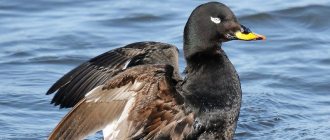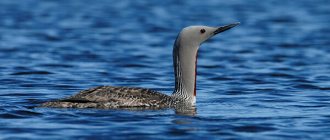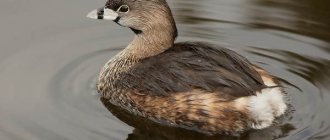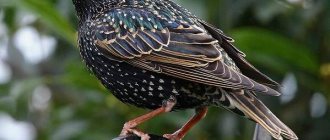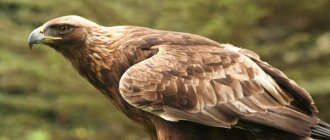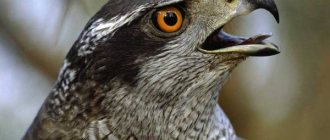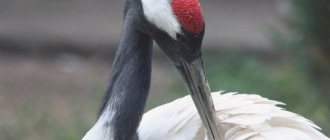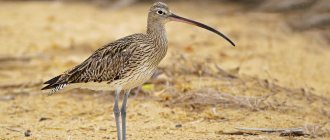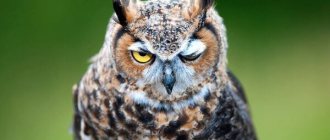The luxurious wigeon (Anas sibilatrix), Chilean wigeon or Chiloe wigeon belongs to the family Anatidae, order Anseriformes. It belongs to the indigenous ducks of southern South America. The specific name is derived from the name of the island of Chiloe, located in southern Chile.
Luxury wigeon (Anas sibilatrix)
In its native places, the luxurious wigeon is called “piebald duck” or “royal duck.” There is another nickname for the luxurious wigeon - rattle or whistler, its appearance is associated with the peculiarities of the bird's call.
What are the differences between the wigeon and other species of ducks?
The duck differs from many representatives of its family by the following basic characteristics:
- quite small in size;
- active cultivation, use in industrial sectors for the production of meat with excellent taste, feathers that can retain heat;
- hunters and collectors prefer to make stuffed wigeon ducks because of their beautiful, unusual color;
- color during the mating season is distinguished by its variety of shades and their combinations;
- small head with a fairly large, wide forehead;
- short thin neck;
- small legs, despite the overall size of the bird;
- tail, wings clearly stand out, pointed towards the ends;
- The voices of wigeon ducks are similar to whistling, which also distinguishes them from other birds.
Who is she, the “cherished bird”?
The wigeon belongs to the duck family, the order Anseriformes. A separate group was identified for them due to the structure of the beak - it is smaller than that of standard ducks. Their species is a sociable bird that prefers to gather in flocks of up to 100 individuals. At the same time, they are considered very careful and vigilant representatives of birds.
Main characteristics of the wigeon:
- Adults grow up to 50 cm.
- The weight of females ranges from 500 g to 900 g, and males - from 700 g to 1100 g.
- The size of the wings at full span reaches 55–65 cm.
Even the photo of the wigeon duck shows that it is much larger than many relatives from the family and has an interesting color.
External differences between a male and a female
The female wigeon duck, as in the photo, has a brown-gray color with characteristic black splashes. The wings are black and gray. They maintain this appearance constantly and do not change their color during the spring molting. The chicks retain their mother's appearance until they mature.
The color of the male changes quite often - depending on the season. The beginning of the mating season makes it necessary for drakes to attract attention. In this regard, the color of the feathers becomes:
- the throat and head of the bird are brown with manifestations of black elements;
- the lower abdomen is white;
- the drake's chest takes on a reddish tint;
- the sides and edges of the wings are black with a violet-green tint;
- the back becomes gray with a pronounced pattern.
After the end of the mating season in the fall, the drakes change their color again - the head, back, neck become brown with chestnut patterns, the mirror acquires a bright emerald color.
Russian
Russian Corydalis are considered quite nice pet birds. The Russian variety is quite large and differs:
- sinewy, strong build;
- well-developed muscles;
- lush belly;
- long wings;
- dark brown eyes;
- Russian Crested has a wide medium tail;
- different colors of feathers.
This crested species is unpretentious to food and living conditions, and can do without a pond. She is friendly and lively
The characteristics of the breed indicate that the Russian Corydalis is calm and peaceful, but at the same time moves a lot. Lays eggs all year round. This species of bird is unpretentious in feeding (it eats ground greens and grains) and does not need a pond.
On average, a drake can weigh 2.5 kg. They also differ in their ability to hatch. Representatives of this breed require a clean and dry environment.
Habitats
Convenient, favorable conditions for the habitat of wigeon birds are small, shallow water bodies. Birds can often be found in the northern parts of Europe and Asia.
In Russia, popular, comfortable areas of bird settlement are defined as: territories close to Lake Baikal, the northern part of the country, Siberia, and all the expanses of the Primorsky Territory.
An important point for choosing a place of residence for a flock of ducks is the presence of cereal fields near the water, which will provide a sufficient amount of food.
Wigeon OBSERVATIONS
On the central European coast, flocks of wigeons are found from August to November. In preparation for flying to their nesting places, birds unite in numerous flocks and stay in the lower reaches of large rivers, lakes, dams and ponds, especially in nature reserves. Wigeons, along with other birds (brown geese), are regularly found in meadows located near water bodies - here the birds peck the sprouts of winter crops. Sometimes they can be found in the same flock with birds such as swans or pintails. In Central Europe, wigeons nest in Mecklenburg. Previously, the nesting sites of these birds were near the Altmühl River. Within their range, the number of wigeons is quite large.
Migration Features
For the winter, wigeons go to the southern parts of Asia or the eastern regions of Africa, the warm, comfortable coasts of the Black and Mediterranean seas. Birds spend winter time in quiet, storm-free bays, which are protected from strong winds and adverse weather.
Wigeon ducks settle for wintering in marshy areas, near river reservoirs with a bottom covered with silt.
REPRODUCTION
In Northern Europe, wigeons nest near shallow lakes with rich vegetation. Males court females most intensively in April and May. While mating, they fluff up the feathers on their heads to show off a light stripe on their head. Mating dances are accompanied by a loud, short whistle, to which the birds owe their name. After mating, the female begins to build a shallow nest, which she places on the ground not far from the pond. She lines the nest with twigs, leaves and down, which she places with a roller along the edges of the nest.
A duck lays an average of seven to eight white eggs. Only the female incubates the eggs. Chicks hatched from eggs spend less than a day in the nest. As soon as they dry, the mother transfers them to the pond. At the age of 42-45 days, the chicks are already on their wings.
What do ducks eat?
The wigeon duck feeds exclusively on plant foods. The bird's diet consists of green plant elements that are found directly in the water or on the shore. Such birds like the root parts of vegetation. Ducks often consume grain crops during the period of sowing fields or their ripening.
In winter, birds eat various algae.
Object of hunting
In Russia and the CIS there are various species of ducks (about forty). Approximately thirty species are widespread and are the object of commercial and sport hunting.
Birds of the duck family are prey for hunters not only for their meat. The common eider sea duck, for example, is prized for its down. Eggs of shelducks and goldeneyes are collected in some regions, and the colorful mandarin duck is bred for decorative purposes.
How to properly aim at a sitting duck?
When hunting ducks, you need to take into account that if a duck sits or swims on the water, then it is less vulnerable to shot than a flying duck, and the distance can be the same. This is explained by the fact that the feathers of a sitting duck fit tightly, and if you consider that in addition to feathers, the duck also has down, then everything together forms a very solid shell. In addition, a sitting or swimming duck is a smaller target compared to a flying duck. If possible, when hunting ducks over long distances, avoid shooting sitting ducks. Spring and late autumn are the times when ducks are well feathered, so they are stronger for shot at this time. In summer, ducks are most vulnerable.
How to properly aim at a flying duck?
Surely, every hunter knows that in order to catch a flying duck while hunting, you need to aim and shoot not at the bird’s carcass, but slightly ahead of it. This is explained simply. After all, some time will pass between pressing the trigger of the gun and the moment when the ejected shot reaches the target, in our case a flying bird. And the bird that came under the gun will have time to fly a certain distance. Therefore, when hunting ducks, you need to aim and shoot in front of the target. But at what distance to shoot in front of the target depends on how fast the target moves, what is the distance between the muzzle of the gun and the target. The greater the distance and speed of the target, the greater the distance you need to take in front of the target and then you can hit the target directly.
So duck hunting is also about math. If you shoot at flying birds with normal shooting, as a result of a decent killing circle of a hunting rifle, then it is advisable to aim at the duck at its front part, then it will not escape the charge. Experienced hunters who have the dexterity and skill of duck hunting are able, in any conditions, at any moment, to almost instantly weigh how fast the duck is flying, what is the distance between the muzzle of the gun and the duck. All this allows them to consciously and confidently select the desired “front” and shoot.
Autumn duck hunting
Duck hunting opens on the second or third Saturday in August, depending on the region. By this time, almost all the young ducks are already flying. Duck broods continue to stay in the thickets of horsetail, reeds and other supports. Therefore, in the first days of opening, duck hunting is carried out by approaching or approaching them by boat for a flight. As soon as ducks begin to make mass flights to feed during the evening dawns, hunting for ducks on flights begins.
At the end of September - beginning of October, ducks gather in flocks and fly south. From the beginning of the flight, ducks are hunted from huts with stuffed animals, profiles and decoy ducks.
Duck hunting from a fly-by approach
How does duck hunting work from the approach? Walking duck hunting by fording is usually carried out in small, shallow reservoirs with marsh vegetation, along rivers overgrown with horsetail, grasses and bushes, and in abandoned quarries overgrown with grass.
During such a duck hunt, a trained dog can be of great benefit: it will find a hidden duck, drive it out of the supports into open water or force it to rise on its wing, catch a wounded bird and bring the killed bird to the hunter. The best dogs for duck hunting are wire-haired pointers and spaniels. It is also advisable to have a boat that the hunter can use on the water.
Video
https://youtube.com/watch?v=UmUAIxKJ08Q
Sources
- https://nashzeleniymir.ru/duckhttps://birds-breed.net/page/utki.htmlhttps://www.agro-biz.ru/ohota/vidyi-dikih-utok.htmlhttps://ohota.guru/ dikie-zhivotnye/vse-o-dikix-utkax-raznovidnosti-mesta-obitaniya-perelety.htmlhttps://www.nexplorer.ru/news__11423.htmhttps://ru.wikipedia.org/wiki/Ducks
What do nests look like and where do they nest?
Wigeon ducks build their nests in secluded, safe, inconspicuous places: small depressions in the ground, not far from water, space in the roots of large trees, under branches close to the ground.
Twigs, grass, straw, and other plants are used as building materials. The peculiarity of this type of duck is the fact that only the female finds a place and carries out all the necessary steps to create a cozy nest.
Before egg laying begins, the duck additionally lines the bottom and walls of the nest with down.
Lifestyle
These ducks are considered to be special and amazing birds. They are considered one of the most loyal among birds. If a male has found a female for himself, then he will not lay claim to another lady. However, such devotion is absolutely incompatible with their irresponsibility. Males of this breed do not participate in the formation of a nest for laying eggs (in many birds this process falls on the shoulders of the head of the family). But females are not particularly scrupulous in this matter. They prefer to look for a prepared site that needs some minor improvements. After laying eggs, males leave the nest after 2–4 days.
Wigeon ducks do not like open spaces; they prefer small bodies of water and lead a diurnal lifestyle there. They are considered lovers of sleeping - they manage to do this even during the day on the water, with their heads down.
These wild birds, surprisingly, contain a large number of qualities that it is not clear how they get along with each other. But nature created them this way, and this only adds to their special charm and mystery.
Birds at home, what to keep, what to feed
The excellent taste of the meat, beautiful color, and soft feathers give every reason to breed them at home or on farms. It is important to provide herbivorous birds with a large amount of young, juicy greenery. They include grain crops in their diet.
For comfortable living of ducks at home, it is enough to equip a spacious place for keeping them and build a pond.

